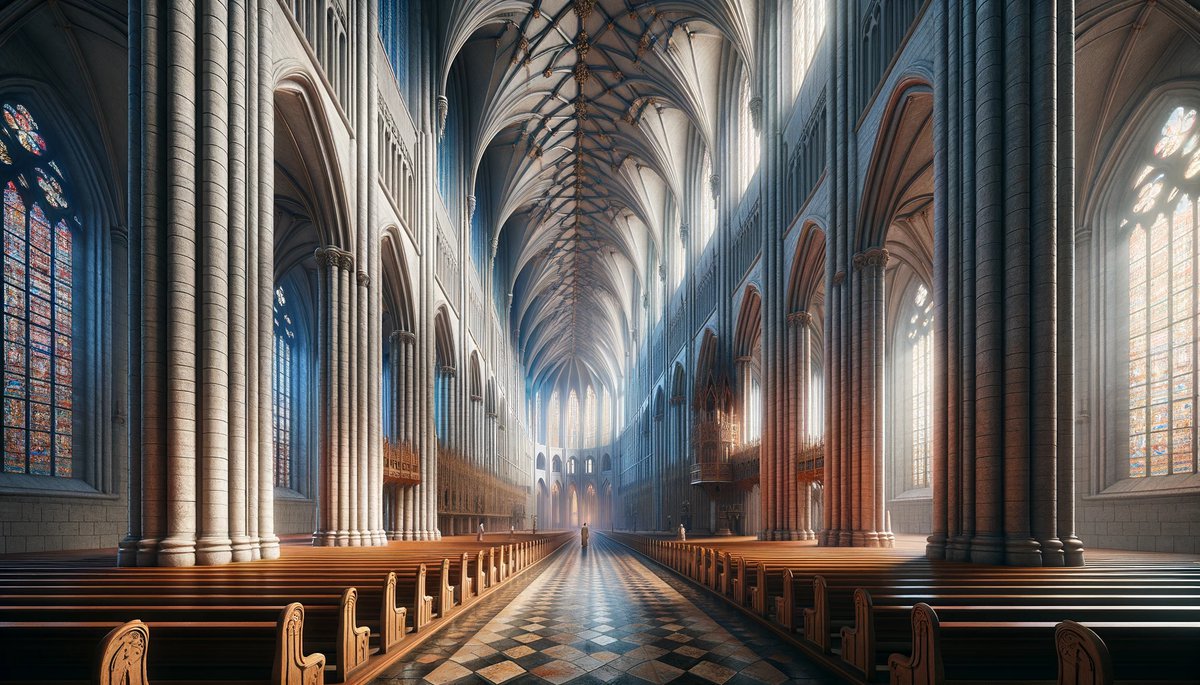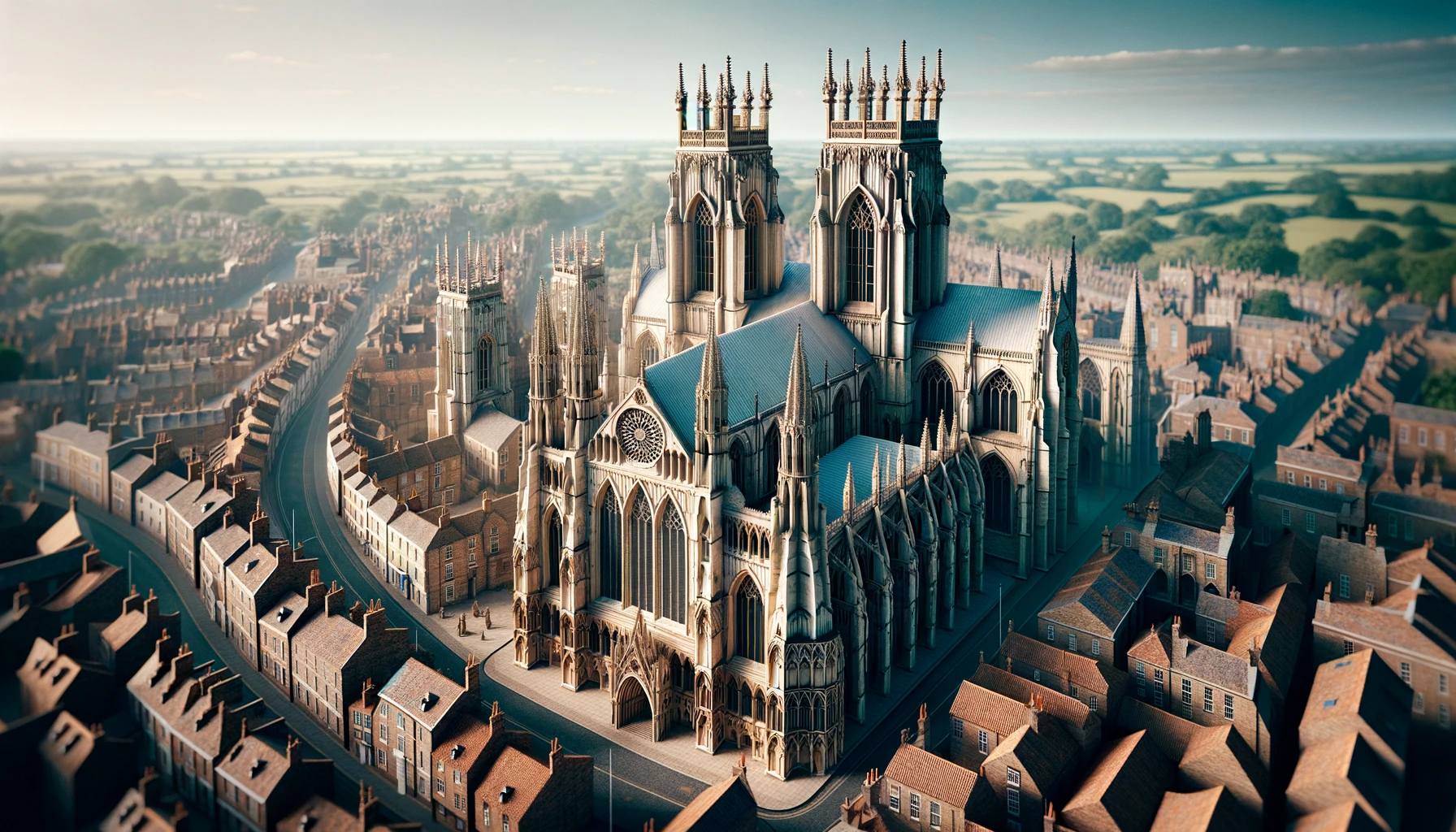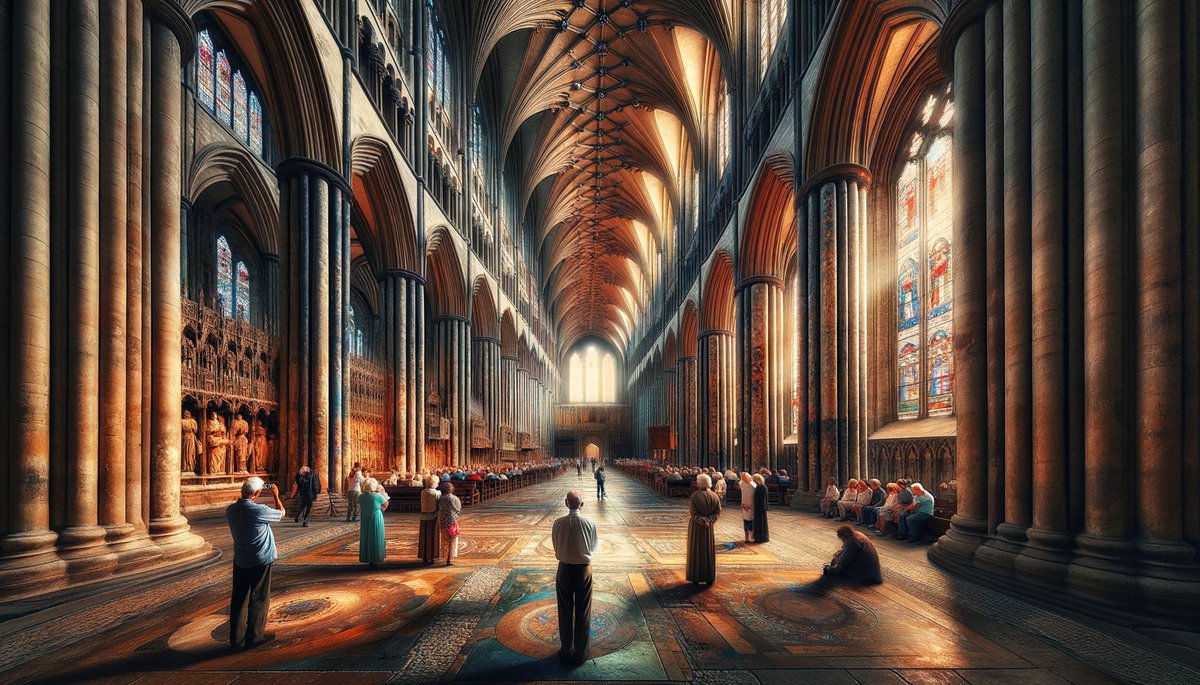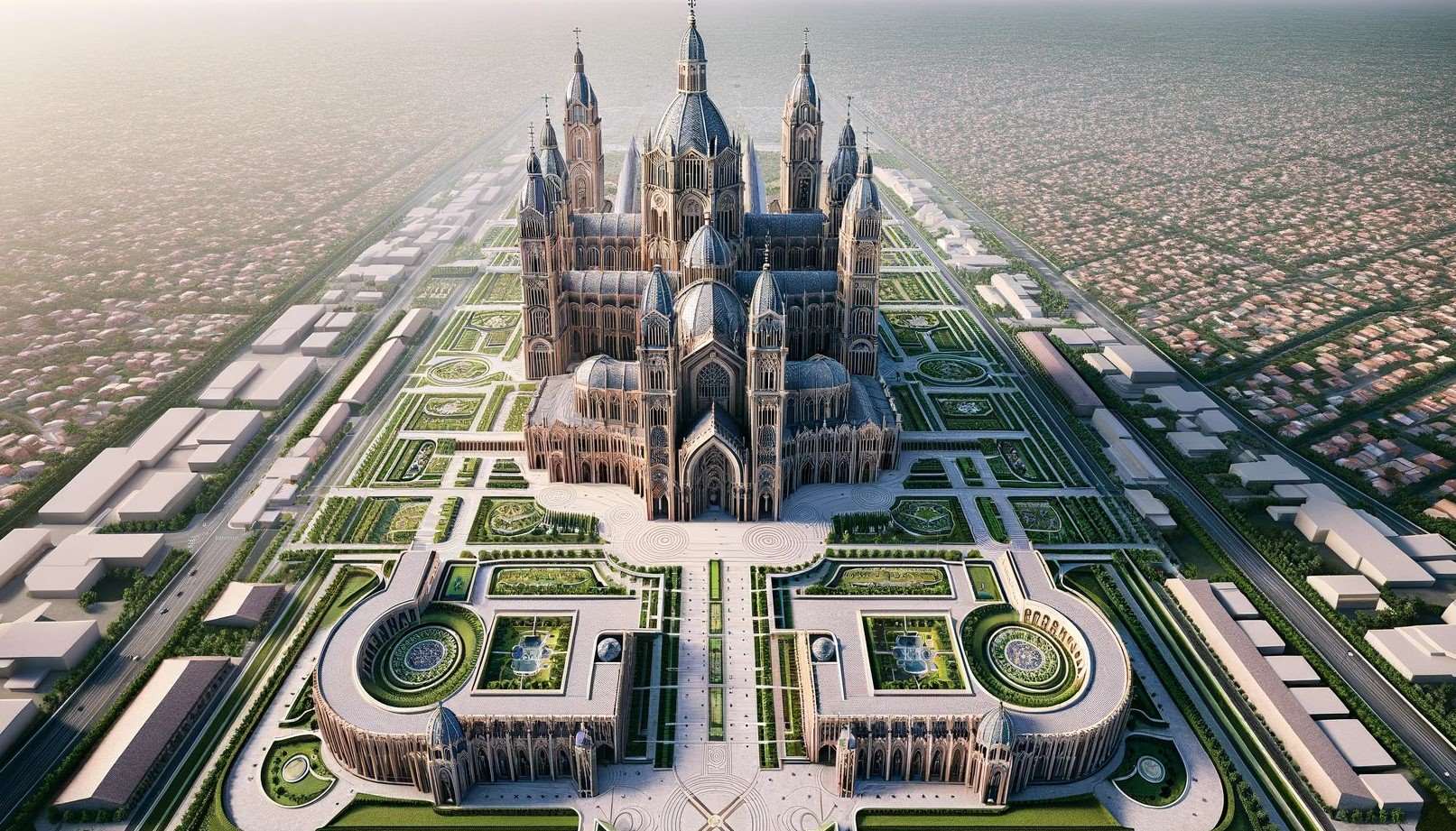Home>Arts and Culture>What Is A Nave In A Cathedral


Arts and Culture
What Is A Nave In A Cathedral
Published: February 16, 2024
Ericka Andersen, an editor at Christian.net, expertly merges digital strategy with content creation, focusing on faith and societal issues. Her communication skills enhance the platform's engaging narratives, fostering meaningful dialogue on belief's impact on society.
Discover the significance of a nave in a cathedral and its role in the arts and culture. Explore the architectural and historical importance of this central space.
(Many of the links in this article redirect to a specific reviewed product. Your purchase of these products through affiliate links helps to generate commission for Christian.net, at no extra cost. Learn more)
Table of Contents
Introduction
When one steps into a grand cathedral, the sheer magnitude and architectural splendor can be overwhelming. The soaring ceilings, intricate stained glass windows, and ornate decorations all contribute to the awe-inspiring atmosphere. At the heart of many cathedrals lies a central space that serves as the focal point of religious ceremonies and a testament to human creativity and devotion: the nave.
The term "nave" finds its origins in the Latin word "navis," meaning "ship." This etymology is fitting, as the nave is often likened to the hull of a great vessel, carrying the faithful on a spiritual journey. As visitors enter the cathedral, they are greeted by the expansive and majestic nave, which stretches from the entrance to the crossing, where the transepts intersect the central nave.
The nave is not merely a physical space; it embodies the spiritual and communal essence of the cathedral. It is a place where worshippers gather to partake in religious rituals, seek solace, and marvel at the divine artistry that surrounds them. The significance of the nave extends beyond its architectural function, encompassing a rich tapestry of history, symbolism, and human experience.
In the following sections, we will delve into the multifaceted nature of the nave, exploring its architectural features, historical significance, and enduring role as a sacred space within cathedrals. As we embark on this exploration, we will uncover the profound meaning and purpose that the nave holds within the heart of these magnificent structures.
Definition of a Nave
The nave, often referred to as the central aisle of a cathedral, is a fundamental architectural element that holds immense symbolic and functional significance. It serves as the main thoroughfare, guiding congregants from the entrance to the altar, and is flanked by rows of pews or seating. The term "nave" stems from the Latin word "navis," meaning "ship," evoking the image of a vessel that carries the faithful on their spiritual journey. This association with a ship is not merely coincidental; rather, it reflects the profound symbolism embedded within the design of the nave.
Architecturally, the nave typically features a long, rectangular layout, with a high ceiling that draws the eye upward, symbolizing the aspiration towards the divine. The expansive space of the nave creates a sense of openness and grandeur, inviting worshippers to immerse themselves in the sacred atmosphere. The central axis of the nave aligns with the altar, emphasizing its role as the focal point of religious ceremonies and spiritual contemplation.
Beyond its physical dimensions, the nave embodies a deeper spiritual significance. It represents the journey of faith, with the congregation metaphorically sailing towards spiritual enlightenment and salvation. The symbolism of the nave as a ship is further emphasized by the term "nave" itself, evoking a sense of unity and collective purpose as worshippers navigate the waters of faith together.
Moreover, the nave serves as a conduit for communal worship, providing a space for congregants to gather and participate in religious rituals, such as processions, hymn singing, and prayer. It fosters a sense of togetherness and shared devotion, reinforcing the idea of a spiritual community united in their faith.
In essence, the nave encapsulates both a physical and metaphysical journey, guiding worshippers through the physical space of the cathedral while symbolizing their spiritual quest for transcendence and divine connection. Its architectural and symbolic significance converges to create a space that is not only aesthetically impressive but also spiritually profound, enriching the experience of all who traverse its hallowed expanse.
Purpose of the Nave in a Cathedral
The nave serves as the central axis of a cathedral, fulfilling a multifaceted purpose that extends beyond its architectural function. At its core, the purpose of the nave is to facilitate and enrich the spiritual experience of worshippers, fostering a profound connection to the divine and to one another.
Spiritual Journey and Contemplation
The nave, with its expansive layout and soaring ceiling, creates a sense of awe and reverence, inviting worshippers to embark on a spiritual journey as they traverse its length. The elongated pathway from the entrance to the altar symbolizes the pilgrim's progress, guiding individuals through a physical and metaphorical passage towards spiritual enlightenment. As congregants walk through the nave, they are encouraged to engage in introspection and contemplation, immersing themselves in the sacred ambiance of the cathedral. The architectural grandeur of the nave amplifies the sense of transcendence, prompting worshippers to seek solace, inspiration, and a deeper connection with the divine.
Communal Worship and Unity
In addition to its role in individual spiritual reflection, the nave serves as a space for communal worship, bringing together congregants in a shared expression of faith. The expansive layout accommodates a large assembly of worshippers, providing a setting for collective rituals, such as processions, liturgical ceremonies, and communal prayer. The nave's design fosters a sense of togetherness and unity, emphasizing the communal nature of religious devotion. As worshippers gather in the nave, they form a spiritual community, bound by their shared reverence and commitment to their faith. This collective experience reinforces the idea of a unified congregation, journeying together towards a common spiritual destination.
Symbolism and Sacred Enclosure
Moreover, the nave embodies profound symbolism, representing the sacred enclosure of the cathedral and encapsulating the essence of the Christian journey. Its longitudinal axis aligns with the altar, emphasizing the centrality of the Eucharist and the focal point of Christian worship. The nave's architectural design, with its open expanse and elevated ceiling, symbolizes the boundless presence of God and the aspirational reach towards the heavens. This symbolism reinforces the idea of the cathedral as a sacred space, enveloping worshippers in a realm of divine significance and spiritual transcendence.
In essence, the purpose of the nave in a cathedral transcends its physical dimensions, encompassing a spiritual odyssey, communal worship, and symbolic encapsulation of the sacred. It stands as a testament to the enduring power of architecture to elevate the human spirit and facilitate profound encounters with the divine.
Architectural Features of the Nave
The architectural features of the nave are integral to its role as the central axis of a cathedral, embodying both aesthetic grandeur and symbolic significance. As worshippers step into the nave, they are greeted by a space that seamlessly blends structural elements with profound symbolism, creating an environment that inspires awe and reverence.
Vaulted Ceilings and Height
One of the most striking architectural features of the nave is its soaring vaulted ceiling, which ascends to great heights, drawing the eye upward towards the heavens. The vertical emphasis of the ceiling serves as a visual representation of the spiritual aspiration and the transcendence of earthly concerns. The lofty expanse creates a sense of openness and grandeur, evoking a feeling of divine presence and majesty. The vaulted ceiling also allows for the dispersion of natural light, casting an ethereal glow that illuminates the interior of the nave, further enhancing its sacred ambiance.
Columns and Arcades
The nave is often flanked by rows of columns and arcades that support the weight of the vaulted ceiling and define the lateral boundaries of the central aisle. These architectural elements not only serve a structural purpose but also contribute to the visual rhythm and symmetry of the space. The columns, often adorned with intricate carvings and decorative motifs, add to the ornate beauty of the nave, reflecting the craftsmanship and artistry of the era in which the cathedral was constructed. The arcades, with their graceful arches, create a sense of procession and movement, guiding worshippers along the length of the nave towards the altar.
Read more: What Is A Cathedral Church
Transepts and Crossing
At the intersection of the nave, transepts extend laterally, forming the shape of a cross and delineating the cruciform layout of the cathedral. The transepts intersect the nave, creating a cross-shaped floor plan that symbolizes the Christian faith and the crucifixion of Jesus Christ. The crossing, where the nave and transepts meet, often features a central tower or dome, further accentuating the vertical dimension of the space and serving as a focal point within the cathedral.
Stained Glass Windows
The nave is adorned with stained glass windows that line the walls, infusing the space with a kaleidoscope of vibrant colors and depicting biblical narratives, saints, and religious symbols. These luminous works of art not only illuminate the interior of the nave but also serve as visual representations of divine revelation and spiritual enlightenment. The interplay of light and color through the stained glass windows creates a transcendent atmosphere, enveloping worshippers in a radiant display of religious iconography.
In essence, the architectural features of the nave converge to create a space that is not only structurally impressive but also spiritually evocative. The harmonious interplay of design elements, from the soaring vaulted ceilings to the resplendent stained glass windows, imbues the nave with a sense of sacred grandeur, inviting worshippers to embark on a transcendent journey within the heart of the cathedral.
Historical Significance of the Nave
The historical significance of the nave spans centuries, reflecting the evolution of architectural, religious, and cultural paradigms. As the central axis of cathedrals, the nave has been a witness to pivotal historical events, societal transformations, and artistic innovations, leaving an indelible mark on the collective consciousness of civilizations.
During the medieval period, the construction of cathedrals and the design of their naves were emblematic of the power and influence of the Church. These grand edifices, with their expansive naves and towering spires, served as physical manifestations of religious authority and spiritual devotion. The nave, with its capacity to accommodate large congregations, became a focal point for religious ceremonies, processions, and communal worship, shaping the collective religious experience of medieval society.
The architectural evolution of the nave also mirrored the advancements in engineering and construction techniques. The soaring vaulted ceilings, supported by intricate ribbed arches and flying buttresses, represented feats of architectural ingenuity and craftsmanship. The development of stained glass windows, depicting biblical narratives and saints, showcased the artistic prowess of the era, transforming the nave into a gallery of divine storytelling and visual splendor.
Furthermore, the historical significance of the nave is intertwined with pivotal moments in European history. Cathedrals, with their naves at the heart, served as sanctuaries, fortresses, and centers of cultural and intellectual exchange during periods of political upheaval and societal change. The nave bore witness to coronations, royal weddings, and significant gatherings, embodying the intersection of religious and secular authority.
As the Renaissance unfolded, the nave continued to be a locus of artistic innovation and expression. The integration of Renaissance art and architecture within cathedral naves ushered in a new era of aesthetic refinement and humanist ideals. The nave became a canvas for renowned artists and sculptors, who adorned its walls and ceilings with masterful works that celebrated the harmony of divine and human creativity.
In modern times, the historical significance of the nave endures as a testament to the enduring legacy of cathedrals and their role in preserving cultural heritage and spiritual traditions. The nave continues to draw visitors from around the world, inviting them to immerse themselves in the rich tapestry of history, art, and faith that permeates its hallowed expanse.
In essence, the historical significance of the nave transcends its architectural and religious dimensions, embodying the collective memory of civilizations and serving as a timeless testament to the enduring power of human creativity, spirituality, and cultural heritage.
Conclusion
In conclusion, the nave stands as a testament to the profound intersection of architecture, spirituality, and human creativity within the heart of cathedrals. Its soaring vaulted ceilings, adorned with resplendent stained glass windows, create an environment that transcends the physical realm, inviting worshippers to embark on a spiritual odyssey. The historical significance of the nave, spanning centuries of societal evolution and artistic innovation, reflects the enduring legacy of cathedrals as guardians of cultural heritage and spiritual traditions.
As visitors traverse the length of the nave, they are not merely moving through a physical space; they are embarking on a symbolic journey of faith, contemplation, and communal worship. The nave's architectural grandeur and profound symbolism converge to create an environment that fosters awe, reverence, and a deep sense of spiritual connection. It serves as a conduit for collective rituals, uniting congregants in a shared expression of faith and devotion.
Furthermore, the nave's historical significance as a witness to pivotal moments in European history underscores its enduring role as a sanctuary, a center of cultural exchange, and a testament to the resilience of human creativity and spirituality. From the medieval era to the Renaissance and into modern times, the nave has remained a timeless symbol of the enduring power of cathedrals to inspire, uplift, and preserve the collective memory of civilizations.
In essence, the nave transcends its physical dimensions, embodying the aspirations, beliefs, and artistic achievements of countless generations. It stands as a testament to the enduring quest for transcendence and the timeless allure of sacred spaces. As we contemplate the significance of the nave within cathedrals, we are reminded of the profound capacity of architecture to elevate the human spirit and foster a sense of connection to the divine.













